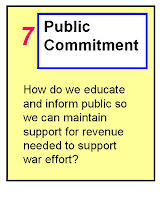Below is a column from the 1997 Chicago SunTimes, telling about the Chicagoland Tutor/Mentor Volunteer Recruitment Campaign that my organization (the Tutor/Mentor Connection) launched as an annual event in 1995. From 1998 to 2002 we grew the campaign to include more than 100 youth programs who were recruiting volunteers at more than 30 sites throughout the Chicago region during the first week of September.
Visit this page and see media stories from 1990s.
It's now almost September 2020 and once again volunteer-based tutor, mentor and learning programs in Chicago and throughout the country are searching for volunteers. This year is different. Most of those calls now seek virtual volunteers who can support youth via ZOOM and other remote platforms, until face-to-face contact can safely return.
What always made my efforts unique is that while I led a single tutor/mentor program reaching youth in one neighborhood of Chicago, the campaign organized through the Tutor/Mentor Connection intended to draw volunteers to every youth tutor, mentor and learning program in the Chicago region.
We supported the volunteer recruitment campaign in the 1990s with a printed directory listing more than 100 different youth serving organizations. We started putting this list on the Internet in 1998 and in 2004 we launched a map-based program locator, that enabled people to find programs in different parts of Chicago by searching for type of program, age group served and location.
In 2008-9 we created a map-based version of this Chicago Program Locator, which you can see at this link. That site has not been updated since 2013 due to lack of funding and talent and is now only available as an archive. Yet it still serves as a model of what communities might create to help services required in multiple places get the resources needed to grow and thrive, such as youth tutor and/or mentor programs.
We never had consistent funding to do this work, although from 1998-2002 we were well supported by several foundations. Yet the work of helping youth through school, by helping organized volunteer-based tutor/mentor programs be part of their lives, is on-going work. These programs need help to grow in 2020 more than in the past.
Because I've created a program locator template and a Chicago Programs Database anyone can use their own voice to draw attention and support to all youth programs in a geographic area.
Below is a recent Tweet from NBA Basketball star LeBron James:
He and other athletes are now taking a lead in calling attention and response to social justice issues. They are focusing on get-out-the-vote strategies, and supporting youth development programs in different places.Change doesn’t happen with just talk!! It happens with action and needs to happen NOW! For my @IPROMISESchool kids, kids and communities across the country, it’s on US to make a difference. Together. That's why your vote is @morethanavote ✊🏾 #BlackLivesMatter
— LeBron James (@KingJames) August 27, 2020
Let's invite them to use those voices to help youth tutor, mentor and learning programs grow throughout Chicago and other cities.
Imagine this. Look at my website and the articles on this Tutor/Mentor blog, which I started in 2005. What if one of the Chicago sports stars, from the Bears, Bulls, White Sox or Cubs were the author of all of these articles? How many more people might have responded and how many more youth might have been helped through school and into adult lives?
Please share this knowledge and help great youth development and birth-to-work mentoring programs be available in every low income area of Chicago and the rest of the world.





































